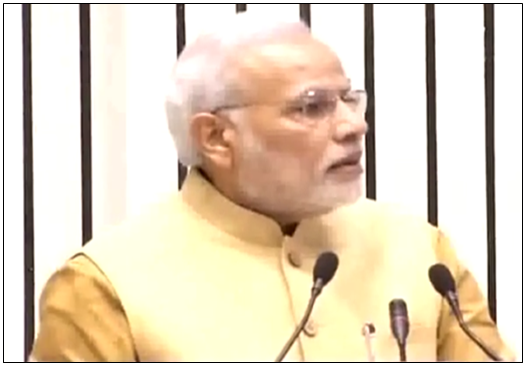On paper, India has all of the potential in the world to become the next big economic powerhouse.
It has 1.3 billion people.
It has a relatively small but growing middle class of 24 million according to Credit Suisse.
It has large stores of coal, iron and manganese.
Its agricultural sector is understandably huge and although still largely subsistence, speaks volumes of the country’s vast fertile and arable land. In fact, India has more arable land than any other country on Earth at 156 million hectacres, according to the World Bank. The U.S. is a close second at 152 million hectacres.
It grew at 7.7 percent from January to March driven by domestic consumption, the fastest growth among major economies worldwide, even faster than China.
A spate of declining labor participation among working age adults, that is, those aged 15 to 64 years old, during and after the global financial crisis appears to have found its bottom and is recovering.
Favorable demographics may also play a big role in the future. Among the world’s largest economies, India has far and away the largest percent of its own population aged 20 to 29, at 27.8 percent in 2017, according to Credit Suisse’s annual Global Wealth Report.
That compares with young adult populations in China being just 19.7 percent and 18.5 percent in the U.S.
In addition, the growth of 18 to 35 year olds expected to provide a big chunk of growth to the Indian economy the next decade according a Bloomberg News analysis as India increases its global share of working age adults, considered a key component of sustaining economic growth and expanding global market share.
Despite all that potential, though, India remains one of the poorest economies on a per capita basis at $7,174 per person in the world despite being the sixth largest economy at $2.6 trillion. So what gives?
Four key challenges come from a lack of infrastructure including the ongoing need for plumbing, massive bureaucracy, cultural divisions still owed to the nation’s caste system and perhaps most importantly, the failure to protect intellectual property.
The U.S. Trade Representative in its annual Special 301 Report once again placed India on the priority watch list of economies that violate intellectual property: “USTR identifies India on the Priority Watch List for lack of sufficient measurable improvements to its IP framework on longstanding and new challenges that have negatively affected U.S. right holders over the past year. Longstanding IP challenges facing U.S. businesses in India include those which make it difficult for innovators to receive and maintain patents in India, particularly for pharmaceuticals, enforcement action and policies that are insufficient to curb the problem, copyright policies that do not properly incentivize the creation and commercialization of content, and an outdated and insufficient trade secrets legal framework. New and growing concerns, including with respect to reductions in transparency by India’s pharmaceutical regulator through the removal of a requirement that applicants submit information about a product’s patent status, as well as positions that India supports and voices in multilateral fora on IP issues, continue to 6 generate skepticism about whether India is serious about pursuing pro-innovation and creativity growth policies.”
This creates a huge disincentive against foreign investment.
India’s neighbor China moved quickly into the global trade environment with rapid industrialization in manufacturing particularly in the 2000s, allowing it to grow global manufacturing market share from 4.75 percent in 2000 to 16.92 percent in 2016, according to data compiled by the World Bank.
Comparatively, India grew from 0.7 percent global manufacturing market share to 1.8 percent over the same period. There is some growth, but not what you’d expect given the large pool of potential manufacturing laborers.
Now, China is no angel on intellectual property either. It too is on the priority watch list by the U.S. Trade Representative. But that has not held back its growth. The differences between the two countries are very numerous. China’s command and control structure have allowed it to move much faster toward industrialization. Also, intellectual property abuses in some cases were not apparent until after foreign companies had made their products in China, only to have the patents stolen.
In 2014, Indian Prime Minister Narendra Modi set out the laudable goal for global corporations to make their products in India. Modi set national goals to create 100 million jobs and to reinvigorate India’s manufacturing sector to be 25 percent of the country’s Gross Domestic Product. It has hovered near 17 percent for several years but Union Minister of Commerce and Industry Suresh Prabhu says the number will rise to 20 percent in the coming years amid a push to build automobiles, aircraft and telecom as well as to increase productivity in agriculture.
To get there of course will require massive investment and a commitment in India to continue down the path of modernization. Their bureaucracy needs to move much faster on infrastructure. But even then, to break the logjam, India needs to clean up its act on intellectual property to truly incentivize foreign investors to take the risk. Only then can it convince the world that it can be a safe place to build factories away from China.
Robert Romano is the Vice President of Public Policy at Americans for Limited Government.







